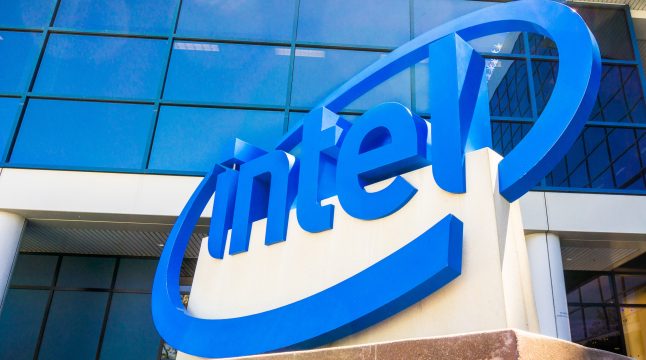INTC: Key Factors Driving Intel’s Stock Surge To $38

Image courtesy of 123rf.com
Intel Corporation (Nasdaq: INTC) stock surged to approximately $38 per share as of October 27, 2025, marking its highest level in nearly two years and representing a remarkable 85-90% gain year-to-date. The dramatic rally has been fueled by two major catalysts: a wave of strategic investments totaling roughly $15 billion and third-quarter earnings results that handily beat Wall Street expectations.
The stock’s resurgence comes after Intel suffered its first annual loss in decades during 2024 and was even removed from the Dow Jones Industrial Average, replaced by Nvidia.
$15 Billion Investment Wave Provides Critical Lifeline
Intel’s remarkable turnaround gained momentum through an unprecedented series of strategic investments totaling approximately $15 billion. In August 2025, the U.S. government took a roughly 10% stake in Intel worth about $8.9 billion as part of the CHIPS Act initiative to bolster domestic semiconductor manufacturing. This historic move made Washington a significant shareholder in America’s leading chip manufacturer, providing critical capital to fund Intel’s cutting-edge fabrication roadmap.
Graphics giant Nvidia invested $5 billion for approximately a 4% stake in Intel, with the two companies planning to jointly develop new CPU-GPU hybrid chips for artificial intelligence applications. This alliance between erstwhile rivals signals a surprising strategic partnership in the AI chip race. Additionally, SoftBank’s Vision Fund quietly purchased roughly $2 billion of Intel shares, further strengthening the company’s balance sheet.
These investments have been characterized as a “financial lifeline” that rejuvenated investor confidence after Intel had been financially strained. The capital infusion enabled CEO Lip-Bu Tan, who took the helm in March 2025, to accelerate Intel’s turnaround strategy while implementing aggressive cost-cutting measures including workforce reductions of more than 20% and selling off non-core business units like a majority stake in its Altera FPGA division.
Q3 Earnings Beat Marks Return to Profitability
Intel’s third-quarter 2025 results, reported on October 23, provided concrete evidence of the turnaround’s progress and sparked an immediate 7-9% stock surge. Revenue came in at $13.7 billion, up approximately 3% year-over-year and topping consensus estimates of around $13.1 billion. More importantly, Intel recorded an adjusted profit of $0.23 per share, dramatically exceeding analyst expectations of essentially breakeven results and marking a sharp reversal from the losses posted in Q3 2024.
The company’s gross profit margins reached approximately 40%, significantly healthier than the 35-36% analysts had anticipated, helped by cost-cutting initiatives and one-time gains from asset sales. On a GAAP basis, Intel reported roughly $4.1 billion in net income for the quarter, demonstrating the effectiveness of CEO Tan’s restructuring efforts. CFO Dave Zinsner highlighted that chip demand is currently outpacing supply, describing it as a “high-class problem” that Intel hasn’t faced in years.
Despite the strong results, Intel faces ongoing challenges. The company acknowledged that manufacturing yields on its next-generation 18A process chips remain low and won’t reach acceptable levels until 2027. Fourth-quarter guidance called for revenue of $12.8-13.8 billion with EPS around $0.08, suggesting only modest sequential growth. Nevertheless, the quarter demonstrated that Intel’s aggressive belt-tightening and renewed focus can deliver results, with 2025 capital spending expected at approximately $27 billion, down significantly from previous plans.
Stock Hits Two-Year High as Analysts Debate Intel’s Valuation
As of October 27, 2025, INTC stock was trading around $40.10, up $1.83 (+4.77%) during morning trading, with the stock having reached an intraday high near $40.67. The year-to-date gain of roughly 85-90% vastly outperforms the S&P 500’s approximately 6% return and even exceeds rival semiconductor stocks. Intel’s market capitalization stands at approximately $191 billion, with the stock demonstrating a technical “golden cross” pattern in October when its 50-day moving average crossed above the 200-day moving average.
However, Wall Street analysts remain cautious despite the rally. The average 12-month price target sits around $26-30 per share, roughly 25% below current levels, with multiple firms recently downgrading the stock. Bank of America cut its rating to Underperform and HSBC downgraded to Reduce, both citing concerns that Intel has “run too far, too fast” relative to its still-recovering fundamentals. Intel’s forward P/E ratio near 70 times earnings appears stretched compared to Nvidia’s approximately 30 times and AMD’s roughly 40 times.
Key metrics reveal Intel’s improving but still challenged position: the company ended Q3 with $30.9 billion in cash and short-term investments, up from $22.1 billion at year-end 2024, while total debt declined by about $3.4 billion to $46.6 billion. Trading volume reached 74.6 million shares, well below the average volume of 125.9 million, with the stock’s 52-week range spanning $17.67 to $41.12. The next earnings date is scheduled for October 23, 2025, with analysts closely watching whether Intel can sustain momentum into 2026.
More By This Author:
Qualcomm Stock Rises As Company Enters AI Data-Center MarketFrom Boycotts To Buybacks: Why Walmart Outshines Target In 2025
AMD Hits ATH: 2 Major Factors Behind The Rise
Disclaimer: The author does not hold or have a position in any securities discussed in the article. All stock prices were quoted at the time of writing.



